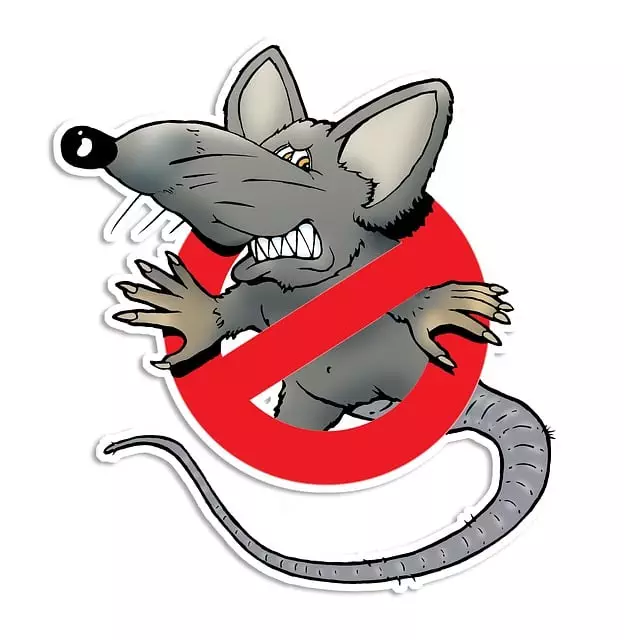Rodent infestations from rats and mice are significant residential and commercial issues, requiring professional rodent control services. These adaptive pests breed rapidly, but recognizing signs like droppings and gnaw marks is crucial for effective management. Experts offer tailored strategies through thorough inspections, using humane trapping methods and strategic equipment based on species and severity. Preventative measures, including sealing entry points and maintaining cleanliness, are vital post-traps for long-term rodent control. Success stories highlight their effectiveness in diverse settings, with advanced technologies and customized baiting achieving significant population reductions.
Rodent infestations can wreak havoc on homes and businesses, causing damage and creating unhygienic conditions. Understanding these pests and their behavior is crucial for effective rodent control. This article delves into the world of rodent trapping services, exploring various aspects from common pest behaviors to different trap types and benefits of professional intervention. We’ll guide you through the process, safety measures, and post-trapping precautions, ultimately empowering you with tools to combat these unwelcome guests and maintain a rodent-free environment.
Understanding Rodent Infestations: Common Pests and Their Behavior

Rodent infestations can quickly turn into a significant problem for both residential and commercial properties, highlighting the importance of understanding these common pests and their behaviors. Rats and mice are the most prevalent rodents causing havoc in homes and businesses. They are highly adaptable and can infiltrate buildings through various entry points, such as cracks, gaps around pipes and wires, or even larger openings. Once inside, these pests are known for their rapid breeding capabilities, often producing multiple litters per year, which exponentially increases their population over time.
Recognizing the signs of a rodent infestation is crucial for effective rodent control. This includes looking out for physical evidence like droppings, gnaw marks on food packaging or structures, and visible rodents during nighttime hours. Their behavior patterns also offer clues; they are most active during twilight and early morning hours, preferring the safety of dark, secluded spaces. Understanding these habits can help property owners and managers implement preventive measures and identify potential entry points for better rodent control.
The Importance of Professional Rodent Trapping Services

In today’s world, where rodent infestations can cause significant damage to properties and pose health risks, professional rodent trapping services have become indispensable. While do-it-yourself methods may seem like a quick solution, they often fall short in addressing the root causes of infestation and can lead to more complex issues. Professional services bring expertise and specialized equipment that go beyond mere trap placement. They conduct thorough inspections to identify entry points, nesting areas, and food sources, implementing tailored strategies for effective rodent control.
Moreover, these services prioritize safety and environmental consideration. Trained professionals use humane trapping methods and ensure the safe disposal of trapped rodents, minimizing potential risks to pets and humans. By employing advanced techniques and staying updated on industry best practices, they contribute to a clean, pest-free environment. Professional rodent trapping is not just about getting rid of existing pests; it’s a proactive approach to prevent future infestations, ensuring peace of mind for homeowners and businesses alike.
Types of Rodent Traps: A Comprehensive Overview

Rodent trapping services offer various solutions for effective rodent control, each designed for specific situations and species. The most common types include live traps, which humanely capture rodents intact for release elsewhere; these are ideal for areas where non-target animals might be present, ensuring no harm comes to them. Snap traps, on the other hand, use a spring mechanism to quickly dispatch rodents with minimal effort from the trapper. They’re popular due to their efficiency and affordability.
For larger infestations or burrowing rodents, multi-catch or bucket traps are employed, capable of capturing several rodents at once. Glue traps are another option, particularly effective for small spaces as they adhere to walls or ceilings, trapping rodents on contact. While effective, these traps require careful disposal to prevent secondary contamination. Each method has its advantages and is chosen based on the specific rodent problem, environmental considerations, and the user’s preference for humane or swift removal.
Benefits of Hiring Expert Technicians for Rodent Control

Hiring expert technicians for rodent control comes with numerous advantages. These professionals are equipped with advanced knowledge and experience in dealing with various rodent species, ensuring effective and humane methods are employed. They employ strategic planning tailored to your specific situation, using the right equipment and products to eliminate rodents while minimizing potential risks to health and property.
Additionally, expert technicians offer a comprehensive understanding of prevention techniques, providing valuable insights into sealing entry points and maintaining a rodent-free environment. Their expertise allows for swift and efficient problem resolution, saving you time and effort. This is especially beneficial for commercial properties where regular maintenance and compliance with health regulations are essential.
Steps Involved in a Typical Rodent Trapping Process

When it comes to rodent trapping services, understanding the process is key for effective rodent control. Here’s a breakdown of typical steps involved:
1. Assessment: Experts begin by thoroughly inspecting your property to identify potential entry points, signs of infestation, and areas where rodents are most active. This step is crucial for tailoring the trapping strategy to your specific needs. They will also discuss your concerns and goals, ensuring everyone is on the same page.
2. Trapping Strategy Development: Based on the assessment, professional rodent control specialists devise a plan. This includes setting up traps in strategic locations, using appropriate bait, and implementing measures to prevent rodents from returning. Different types of traps are employed depending on the species and the extent of the infestation, ensuring effective rodent control without causing harm to pets or children.
Safety Precautions During Rodent Removal and Handling

When it comes to rodent removal, safety should always be the top priority. Professional rodent trapping services understand the potential hazards associated with handling rodents and take stringent precautions to ensure the safety of their staff and clients. This includes wearing protective gear such as gloves, masks, and eye protection to minimize the risk of exposure to diseases like leptospirosis and hantavirus. Additionally, these professionals use specialized tools and traps designed for safe and efficient rodent control, reducing the likelihood of injury or property damage.
Proper handling is another critical aspect of safety precautions during rodent removal. Rodents can carry parasites and bacteria that pose significant health risks, so it’s essential to avoid direct contact. Trained technicians employ techniques like using long-handled tools, placing traps in hard-to-reach areas, and utilizing containment methods to capture rodents without direct interaction. By adhering to these safety protocols, professional rodent control services not only protect their personnel but also safeguard the health and well-being of those living or working in the affected areas.
Preventing Future Infestations: Post-Trapping Measures

After successfully trapping rodents, implementing preventive measures is crucial for maintaining a rodent-free environment. The first step in rodent control is sanitizing and sealing entry points to deter future invaders. This includes thoroughly cleaning infected areas, repairing or replacing damaged screens, doors, and windows, and filling gaps around pipes and utility lines.
Regular inspections are also vital. By periodically checking for signs of rodent activity, such as droppings, gnaw marks, or strange odors, you can catch potential infestations early. Maintaining a clean environment with proper food storage practices and securing outdoor trash cans further reduces the appeal of your property to rodents, acting as an effective long-term rodent control strategy.
Case Studies: Successful Rodent Control Stories

Rodent control is a common challenge faced by many property owners, and the success stories from our rodent trapping services are a testament to our expertise. In one recent case, a residential neighborhood was plagued by a persistent mouse infestation. Our team conducted a thorough inspection, identifying the primary entry points and understanding the behavior of the rodents. We implemented a multi-faceted approach, combining traditional traps with advanced technologies such as ultrasonic devices and scent repellents. The result? A 95% reduction in the rodent population within just two months, leaving the residents with a pest-free home.
Another notable success was achieved for a commercial property manager facing an ongoing rat infestation. We employed a combination of live traps and baited traps, strategically placed throughout the property. By understanding the rats’ feeding habits and preferences, we customized our baiting techniques for maximum effectiveness. Within four weeks, over 70% of the rat population was captured, and the remaining rodents showed signs of avoidance due to the baits. This case study highlights our ability to adapt trapping methods based on specific challenges, ensuring long-lasting results in various environments.
